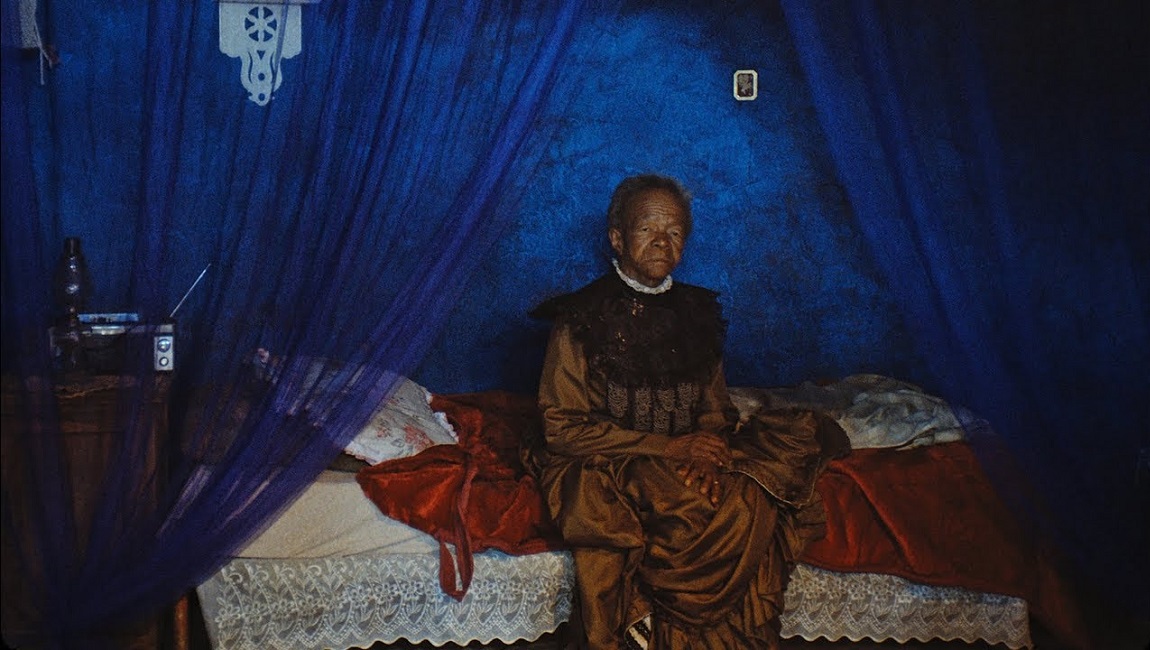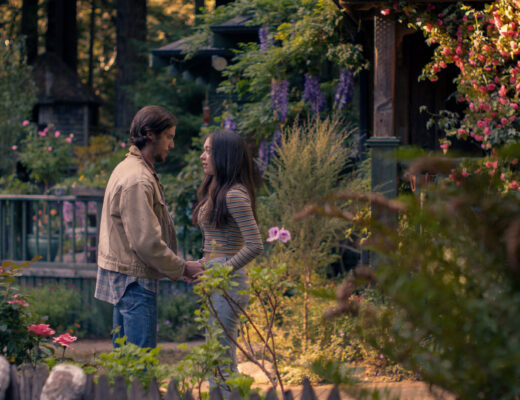This is Not a Burial, It’s a Resurrection is a remarkable debut, a tonally complex and visually sumptuous marvel.
Existing in a kind of liminal space between ethnographic documentary and dream-like fable, Lemohang Jeremiah Mosese’s This is Not a Burial, It’s a Resurrection charts the inexorable flow of encroaching modernity and how it intertwines with and irrevocably alters deeply-rooted connections between people and their ancestral lands. Set in a tiny rural village in Lesotho — the small, landlocked country surrounded entirely by South Africa — an elderly woman named Mantoa (Mary Twala Mhlongo, in her final performance) awaits her son’s return from his job in a faraway gold mine. Instead, news arrives that he’s been killed in an accident. Despondent over his death, as well as the prior passing of her husband, daughter, and grandchild, Mantoa disavows the church, curses God, dons traditional mourning garb, and sets about arranging for her own burial. Interrupting her plan is an announcement that the village is going to be razed to make way for a new dam, which will flood the surrounding area with water once it’s constructed. The villagers are being forcibly relocated to housing in the city, and this conflict with local officials constitutes the main narrative through line that sustains the film.
But narrative is loosely applied here, with the film far more interested in small, privileged moments like songs and rituals. There’s a structuring device involving an unnamed narrator (Jerry Mofokeng Wa Makhetha) who plays a lesiba to a small crowd while reciting poetic koans about life and death, and who Mosese occasionally cuts away to during the film as if he’s an omniscient observer or a riff on a Greek chorus. The narrator’s scenes are shot mostly in extreme closeup, all velvety darkness with soft blues and oranges enveloping the frame. But the footage of Mantoa and life in the village is unadorned by such flourishes, utilizing mostly natural light and careful, portraiture-style images. While all manner of life and death is discussed, Mosese also basks in the natural beauty of the area. Shooting in the boxy academy ratio on what appears to be Super 16mm film, he frames people against expansive blue skies and verdant rolling hills that seem to go on forever. Walls are painted blue and purple and pink, with cascading light emanating from windows. There are always children running and playing, with brightly colored clothes swaying rhythmically on clotheslines. Fabrics and textures play an important role here, from thick wool and viscous mud to delicate, almost translucent lace and finely filigreed needlepoint. It’s a feast for the eyes, every image a testament to the wonders and gentle beauties of this small community. There’s abundant joy here, a sense of camaraderie that acts as a counterpoint to the overriding fixation on loss and death.
As construction begins on the dam, Mantoa fiercely defends her home, even rallying the other villagers and their Chief to try to defy the government’s decree. She explains to a young boy that the valley containing their village was once called “the plains of weeping” before colonizers and Christian missionaries rechristened it Nazareth, and that during the Boer War and the Black Plague people would cross the valley with their sick on their way to the country’s only hospital. Those that couldn’t make the journey and died en route were buried beneath the plains, and their village now sits on top of not only these anonymous remains, but the more recent generations of deceased as well. While thoughts of the dead are pervasive, Mosese creates a kind of opaque atmosphere of contemplative reverie. Mantoa is haunted by spirits, not in any literal sense, but in the way that actions and objects can evoke memories of loved ones. There’s a particularly beautiful moment where Mantoa pantomimes a dance with her long-dead husband, her arms outstretched around thin air as she waltzes alone in her home. Mosese and cinematographer Pierre De Villiers fill the film with these kinds of lovely grace notes, attuned to the physicality of their subjects and how their lifestyle and the surrounding topography are innately connected. The act of uprooting these people and disturbing their ancestral graves brings its own kind of death, and the film seems to suggest that the eponymous “resurrection” is the act of remembrance. Located somewhere between the work of Costa and Kiarostami, but, importantly, beholden to neither, This is Not a Burial, It’s a Resurrection is a major work and announces Mosese as an exciting and important contemporary filmmaker. His film is a beautiful object, both mournful and hopeful, clear-eyed about the future without wallowing in misery, and respectful of a cultural heritage that is rapidly disappearing.







